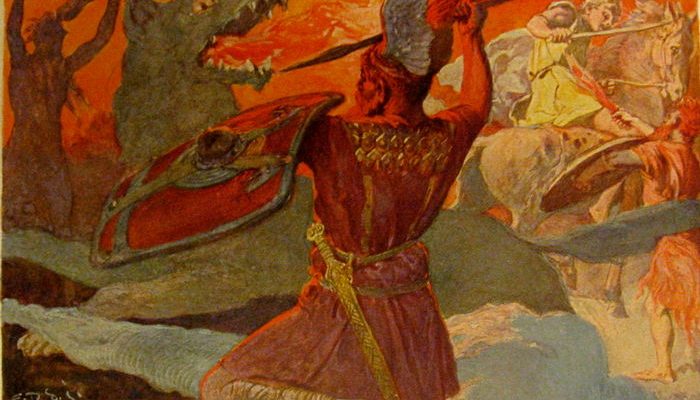Norse mythology, the age-old belief system of the Vikings and the Northern European tribes, is not just a collection of fantastical tales but an intricate tapestry woven into the fabric of history and culture. So, how did Norse mythology start? Well, according to the lore, it began with Ymir, the first being, and expanded into a pantheon of gods, giants, and monsters from Norse folklore, filling in the gaps of human understanding about the world.
What sets Norse mythology apart? For one, it embraces the concept of fatalism — the idea that destiny is set in stone, and even gods can’t escape it. Unlike Greek mythology, where gods are immortal and above human struggles, Norse deities experience birth, love, conflict, and even death. Moreover, the mythology brings a diverse array of terrifying creatures, each adding a layer of complexity and richness to the mythos.
10 – The Kraken: The Sea’s Unspeakable Horror
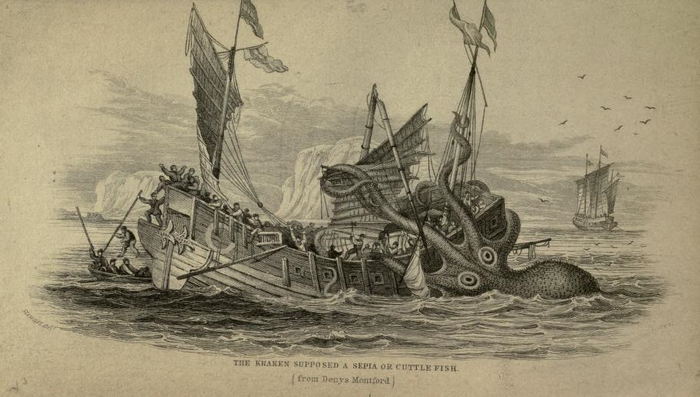
Let’s set sail into the treacherous waters haunted by The Kraken, the epitome of maritime nightmares. In the dark, frigid depths of the ocean, this tentacled leviathan lies in wait, symbolizing the unfathomable perils that have tormented seafarers for generations.
The Kraken is not just a myth to frighten disobedient children. Its tales are often whispered by hardened sailors who’ve seen too much. This creature transcends its role as a mere terrifying monster and stands as a formidable metaphor for the untamed forces of nature that were so significant in Norse culture. The Kraken didn’t merely terrify; it embodied the dark, inexorable forces that man can neither control nor fully understand.
In Norse folklore, this massive sea monster had the power to whirl the seas into deadly maelstroms, dragging entire ships and their crews down to a watery grave. Its size was said to be so immense that its body could be mistaken for an island. Just think about that for a moment. This is no ordinary monster; this is a gargantuan force to be reckoned with.
09 – Fenrir: The Wolf Destined to Shatter the World
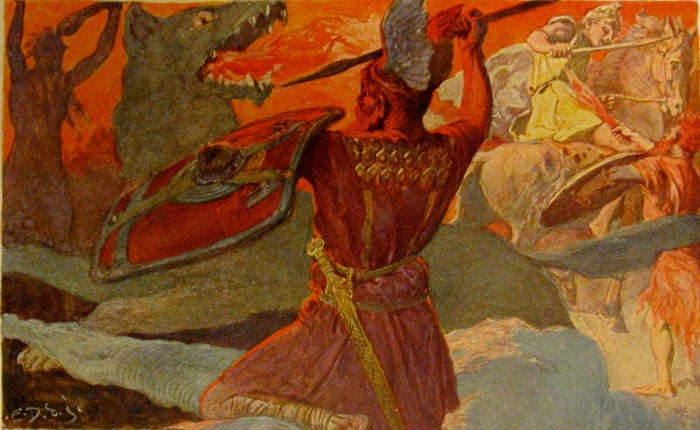
If there’s a Norse mythology monster that evokes both awe and dread, it’s Fenrir. This gigantic wolf is nothing short of a force of nature, a living cataclysm foretold to wreak havoc during Ragnarok, the end of the world. Born from Loki, the god of mischief, and the giantess Angrboða, Fenrir’s lineage alone is enough to send shivers down one’s spine.
Despite being bound by the gods in magical chains, Fenrir’s looming threat persists. His anticipated freedom during Ragnarok serves as a constant reminder of the unpredictable, chaotic elements that exist both within and outside the realm of human understanding. He is not just another terrifying creature. He’s a manifestation of impending doom, an allegory of an uncontrollable destiny, that was pivotal in shaping Norse beliefs about fate and chaos.
08 – Dark Elves and Light Elves – Dökkálfar and Ljósálfar: The Dual Nature of Reality
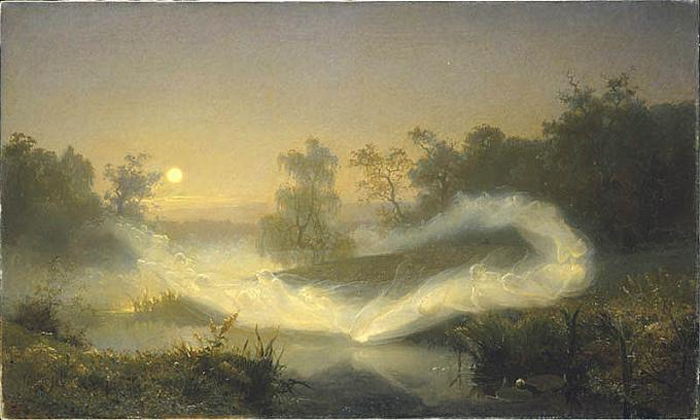
The mystical realms of Alfheim and Svartalfheim are home to the Light Elves (Ljósálfar) and Dark Elves (Dökkálfar), respectively. More than mere figments of the imagination, these Norse mythical creatures represent complex existential dichotomies deeply embedded in Norse culture.
The Light Elves are celestial beings of extraordinary beauty and wisdom, dwelling in heavenly realms. They represent purity, light, and the positive forces that humanity aspires to. On the flip side, the Dark Elves are subterranean creatures often associated with malice and darkness. However, it’s crucial to understand they’re not entirely evil. They simply embody the darker aspects of reality that are just as integral to the Norse worldview.
07 – Norns: The Weavers of Fate
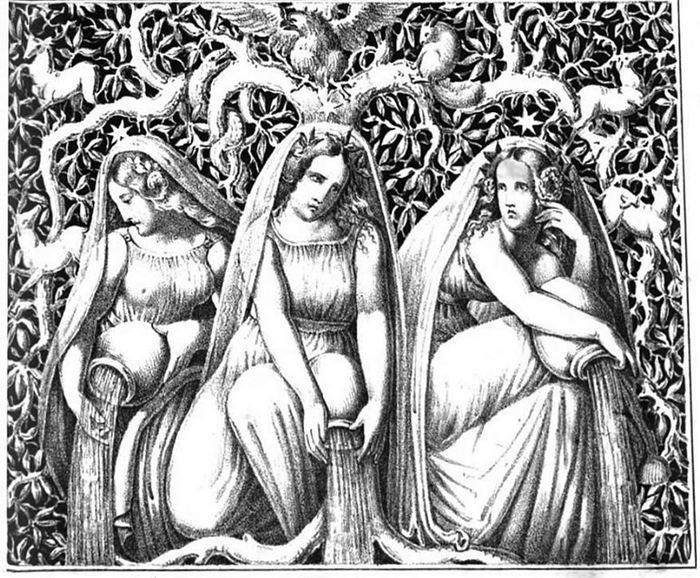
Picture this: Three mystical women, known as the Norns, who dictate the destiny of gods and men. Dwelling beside the Well of Urd beneath Yggdrasil, the cosmic tree, they spin the threads of fate. These threads are no ordinary fibers. They determine the lives of every being in the cosmos, both ancient creatures and newborns alike.
The Norns play a powerful role, deciding the rise and fall of great warriors and the outcomes of significant events. They’re not your typical Norse mythical creatures; they stand as symbols of an inexorable destiny that no one can escape, not even the gods. The Norns influence every element of Norse culture, from tales of heroism to cautionary stories.
Their names—Urd (“what once was”), Verdandi (“what is coming into being”), and Skuld (“what shall be”)—serve as a constant reminder of time’s linear and cyclic nature. They make the Norns uniquely compelling figures in the panorama of Norse mythology monsters. Unlike terrifying creatures that serve as obstacles or threats, the Norns represent the inevitability of destiny, challenging us to confront our fate head-on.
06 – Nidhogg: The Serpent at the World’s End

At the base of Yggdrasil, the world tree, resides a dragon-like serpent known as Nidhogg. This is no ordinary dragon; Nidhogg gnaws at the roots of Yggdrasil, perpetually seeking to bring about its downfall. The monster serves as a cautionary symbol of corruption and decay within the cosmology of Norse folklore creatures.
Nidhogg isn’t merely a creature to be defeated; it’s a grim testament to the concept of entropy. In the grand tapestry of Norse culture, where heroism often triumphs, Nidhogg serves as a stark reminder that destructive forces are equally potent. It’s not just a terrifying monster but a harrowing emblem of nature’s darker aspects, suggesting that creation and destruction are two sides of the same coin.
05 – Huginn and Muninn: Odin’s Eyes in the Sky
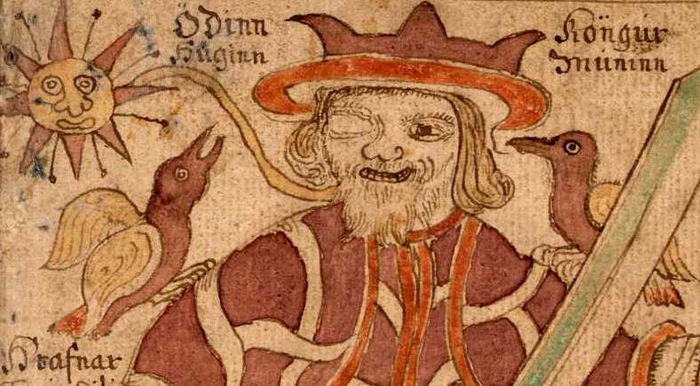
In the high halls of Asgard, perched on the shoulders of Odin, the Allfather, are two ravens known as Huginn and Muninn. They are far from ordinary birds; these are Odin’s emissaries, his eyes, and ears in the world. Every day, they fly across the lands, gathering news and insights, providing Odin with invaluable intelligence on both terrifying monsters and mundane matters alike.
However, Huginn and Muninn are not just feathered spies. They symbolize the insatiable quest for knowledge and wisdom, traits highly valued in Norse mythology. Huginn represents thought, while Muninn embodies memory. Together, they illustrate the intellectual and spiritual dimensions of Odin, who himself is a complex figure revered for his wisdom and feared for his wrath.
These creatures in Norse Mythology represent the dual aspects of the mind, illustrating the importance of both cognition and recollection. In a world of terrifying creatures and ancient creatures, the ravens serve as reminders that wisdom and knowledge are just as powerful as brawn and swordsmanship.
04 – Trolls: The Mischievous Giants of Norse Lore
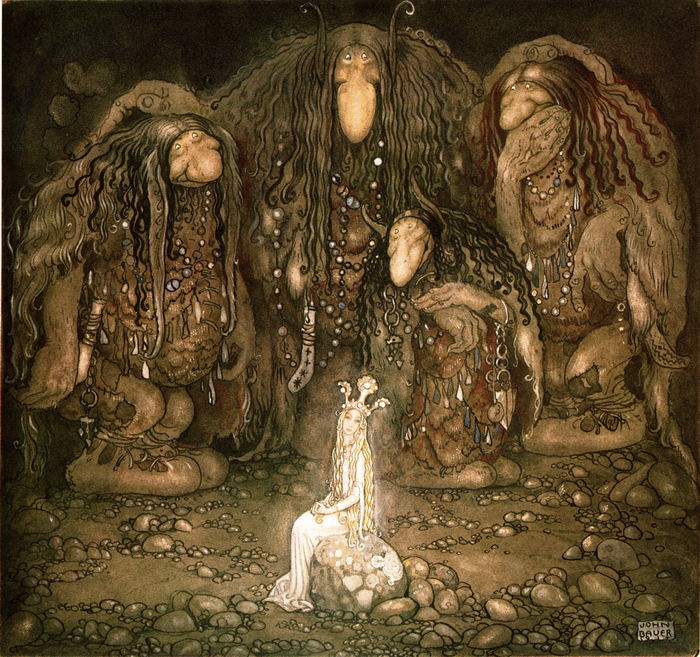
Say the word “troll,” and most people conjure up images of vile creatures lurking under bridges or behind computer screens. However, in Norse mythology, trolls are far more complex than these modern caricatures suggest. They are giants, usually depicted as immense and dim-witted, yet incredibly strong. In the grand scheme of Norse folklore creatures, trolls represent the primordial chaos that existed before the cosmos was ordered.
Trolls dwell in isolated rocks, mountains, or caves, far from human settlements but intrinsically linked to the natural world. Although they can be fearsome, they often prefer trickery and illusion to outright combat. In Norse culture, trolls are also known for their ability to shape-shift, adding a layer of mystique to their already enigmatic existence. They are not just terrifying monsters; they are fascinating examples of the diversity and complexity of creatures in the Norse pantheon.
03 – Valkyries: Choosers of the Slain
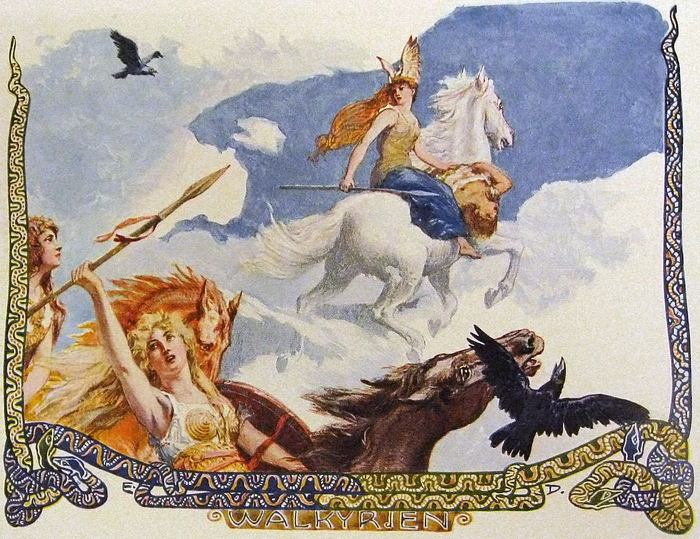
If you think of warrior women descending from the sky to choose who lives and who dies on the battlefield, then you’re already familiar with Valkyries. In Norse mythology, these female figures serve Odin, selecting the bravest of fallen warriors to join him in Valhalla. Their role is a blend of angel and judge, with a dash of warrior spirit for good measure.
However, Valkyries are not merely battlefield recruiters. They embody virtues such as bravery, fairness, and even love, often appearing in tales as lovers or helpers of heroes. Their duality—both beautiful and deadly, compassionate and impartial—makes them incredibly intriguing figures in Norse mythology monsters. In Norse culture, they hold a special place, not as terrifying creatures, but as icons of courage and sacrifice.
02 – Draugr: The Living Dead of Norse Mythology
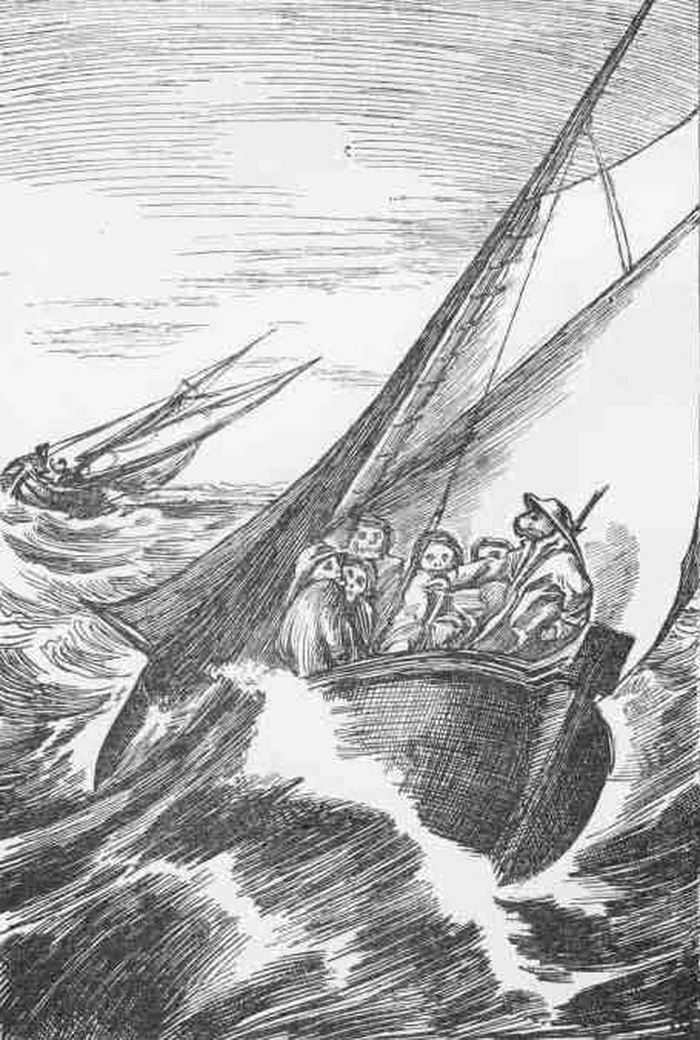
Zombies may be a modern obsession, but the Norse had their own version of the walking dead—Draugr. Unlike their pop-culture counterparts, Draugr are not mindless; they are sentient beings with supernatural powers. These creatures in Norse mythology represent the darker aspects of humanity—greed, envy, and all-consuming wrath.
Draugr are said to rise from their graves, often guarding the treasures they were buried with. And attacking any intruders with a ferocity that belies their undead status. Far from dumb brutes, they can manipulate the environment, summoning storms or shape-shifting into animals. Within Norse folklore creatures, they serve as cautionary figures, warning against the perils of avarice and malice.
These Norse monsters are unsettling reminders that even in death, negative traits can continue to have destructive effects. In a world filled with gods and giants, Draugr emphasize the potential monstrosity residing within each individual.
01 – Jörmungandr: The Serpent That Encircles the World
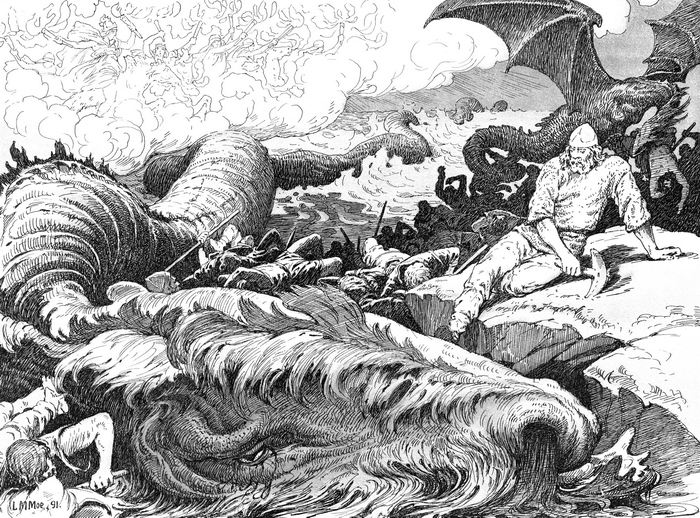
At the pinnacle of Norse mythology monsters, the Midgard Serpent or Jörmungandr stands as an epitome of impending doom and cosmic balance. This terrifying monster is no ordinary snake. It’s a colossal sea serpent so large it encircles Midgard, the realm of humans, biting its own tail. Born from the giantess Angrboda and Loki, Jörmungandr was tossed into the great ocean by Odin but grew so large it encompassed the world.
Jörmungandr represents an almost apocalyptic vision in Norse culture, as its movement is said to herald the beginning of Ragnarok, the end of the world. Despite being one of the most terrifying creatures in Norse folklore, its existence maintains equilibrium in the universe. For each action it takes—whether releasing its tail or rising from the depths—profound cosmic changes follow.
Though seen as a monster, the Midgard Serpent also symbolizes the interconnectedness of all things. Its never-ending circle mirrors the cyclical nature of life, death, and rebirth in Norse mythology. So, Jörmungandr isn’t merely a monster but a manifestation of the complexities inherent in existence itself.
In many ways, this serpent is more than just one of the Norse mythical creatures. It’s a representation of the cosmos’ intricacies and the intricate balance that holds everything together. So, if you’re ever asked, “Who is the most powerful Norse monster?” without hesitation, the answer should be Jörmungandr.
The Essence and the Most Formidable Monster of Norse Mythology
The corpus of Norse mythology primarily revolves around gods and their interactions with humans and other supernatural beings. However, the stories offer more than just cautionary tales or explanations for natural phenomena; they provide a window into the values, mores, and cultural underpinnings of ancient Norse societies. What was Norse mythology mainly about? It was about courage, valor, and the existential struggle between chaos and order, themes that resonate with our basic human experience.
And who tops the list of the most powerful Norse monster? The mighty Jormungandr, the Midgard Serpent, encapsulates the essence of terror and awe. Wrapped around the world, this creature of Norse mythology is foretold to release its tail and rise during Ragnarok, signaling the end of the world.
Unveiling the Spiritual Backbone: Core Beliefs of Norse Mythology and Their Modern-Day Relevance
When discussing Norse mythology, it’s essential not to overlook the underpinning spiritual beliefs that served as its foundation. So, what is the main belief of Norse mythology? At its core, Norse belief centers around the interconnectedness of all life, eloquently symbolized by Yggdrasil, the World Tree, and the Norns, the fates who weave the tapestry of existence.
Far from being outdated or irrelevant, these central tenets have found a unique place in modern spirituality. Believe it or not, objects and artifacts that bear these ancient symbols are highly coveted today, especially in second-hand markets. Why is that? Well, not only do they carry the weight of history, but they are believed to possess spiritual potency. For example, rune stones bearing the likeness of Norse mythical creatures are thought to bring protection and good fortune, explaining their persistent appeal.
Norse mythical creatures aren’t mere bedtime stories. These ancient creatures are derived from deep-rooted spiritual narratives that reflect the Norse people’s understanding of the cosmos and their role in it. So, if you’ve ever felt an uncanny sense of awe reading about monsters from Norse folklore, remember that these terrifying monsters offer us age-old wisdom wrapped in mythical tales. They remind us of the delicate balance and connections that we should strive to maintain in today’s fragmented world.


